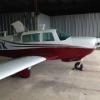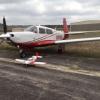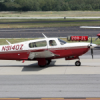Search the Community
Showing results for tags 'camera'.
-
I'd like to get a small camera to record (inside) some of my flights. Being a CB, don't want to pop $500 for a GoPro + stuff. Has anyone used something less expensive? Ideally I'd like to be able to include ATC audio but that is optional if it forces me to $300+ cameras.
-
I know a few of us are running GoPros on the exterior of our aircraft, some by the use of the included sticky mount. Here is a little unknown mount many people aren't aware of, the surfboard mount My girlfriend and I purchased a kayak so of course I want to get some watersport videos. I bought a floaty back door and a surfboard mount so I can do an underwater and hull shot. BUT! I happen to notice the included mounts are QUITE larger than the standard black mounts that come with our camera. How much larger? Well after some lengthy math calculation (I hate math) I've found that the standard surfboard mount (just the larger one pictured above, I'm not counting the tether mount) is 43% larger than the standard mount. Now. How does that equate into safety for our cameras? Well, I did a little research (I started this 'project' at 10pm and it's now 2am, don't worry, I'm bored at work). On the back of the mounts, we are greeted by this: A quick search turns up 3M's technical data on ALL of their adhesive products (located HERE). Lets learn us some MooneySpace knowledge! (Please bear with me, I shamelessly copypasted some 3M articles): The 3M VHB (or Very High Bond) is one of 3M's strongest adhesive material. The material that GoPro spec's out for its mounts is Product number 4991, skinned to a thickness of 0.090" or 2.3mm. This family utilizes multi-purpose acrylic adhesive on both sides of a conformable adhesive foam core. The adhesive provides excellent adhesion to a broad range of high and medium surface energy substrates including metals, glass, and a wide variety of plastics, as well as plasticized vinyl. The conformable adhesive foam core provides good contact, even with mismatched substrates. Aluminum is one of the BEST substrates that this material can be mated to. In their included .pfd of material is A LOT of good stuff. Two things we want to pay attention are these: Normal tensile strength (aka pulling vertical, as in off a desk), and then dynamic overlap shear, (aka sliding across said desk). In the above report, 3M utilizes the ASTM D-897 testing method for tensile and ASTM D-1102 for the dynamic overlap shear. In those, they test in stringent conditions for temp, moisture, and a constant rate at which the force is applied. So keep this simple the results are as follows; 4991 is rated at 70 lbs/sq in for tensile strength and 65 lbs/sq in for shear. Going back to our basic area of the above mounts, the stock GoPro mount is about 2.8 sq in, while the surfboard mount is about 4.0 sq in, both give or take a tenth or two. If I'm not screwing up my math, a simple multiplication table gives us a the following results: Surfboard tensile = 280lbs Surfboard shear = 260lbs Stock tensile = 196lbs Stock shear = 182lbs I do not have any sort of knowledge of fluid dynamics or physics, so if anyone here does and could run a calculation on how much drag a GoPro and mount produce, that would be pretty sweet. But I think it's safe to say our cameras are not producing any sort of drag number listed above. If you want the extra security, you can upgrade to the surfboard mounts (the cheapest place I found them is HERE ). ----------------------------------------------------------------------------------------------------------------------------- Now, on a separate tangent, if some of you have decided to try out the sticky mount, I'd like to highlight the recommendations from 3M as posted below: Time: After application, the bond strength will increase as the adhesive flows onto the surface (also referred to as “wet out”). At room temperature approximately 50% of ultimate bond strength will be achieved after 20 minutes, 90% after 24 hours and 100% after 72 hours. This flow is faster at higher temperatures and slower at lower temperatures. Ultimate bond strength can be achieved more quickly (and in some cases bond strength can be increased) by exposure of the bond to elevated temperatures (e.g. 150°F [66°C] for 1 hour). This can provide better adhesive wetout onto the substrates. Pressure: Bond strength is dependent upon the amount of adhesive-to-surface contact developed. Firm application pressure develops better adhesive contact and helps improve bond strength. Typically, good surface contact can be attained by applying enough pressure to ensure that the tape experiences approximately 15 psi (100 kPa) pressure. Either roller or platen pressure can be used. Note that rigid surfaces may require 2 or 3 times that much pressure to make the tape experience 15 psi. Temperature: Ideal application temperature range is 70°F to 100°F (21°C to 38°C). Pressure sensitive adhesives use viscous flow to achieve substrate contact area. Minimum suggested application temperatures is 60*F for 4991. To obtain good performance with all 3M™ VHB™ Tapes, it is important to ensure that the surfaces are dry and free of condensed moisture. Clean: Most substrates are best prepared by cleaning with a 50:50 mixture of isopropyl alcohol (IPA*) and water prior to applying 3M™ VHB™ Tapes. Shelf Life: All 3M™ VHB™ Tapes have a shelf life of 24 months from date of shipment when stored at 40°F to 100°F (4°C to 38°C) and 0-95% relative humidity. The optimum storage conditions are 72°F (22°C) and 50% relative humidity. The performance of tapes is not projected to change even after shelf life expires; however, 3M does suggest that 3M™ VHB™ Tapes are used prior to the shelf life date whenever possible.
- 4 replies
-
- 2
-

-
- video
- action cameras
-
(and 3 more)
Tagged with:
-
Well I guess I'm officially a candidate for the CB member of the week! I purchased 3 knock off GoPro cameras from Amazon So far the one I played with tonight worked as advertised. Will machine a mounting method, hope to install & test this weekend. I see several recommended software for editing, will have to learn. All 3 camers 4 spare batteries cases & a number of mounting attachments, for less than the cost of 1 GoPro or Vib! My buddies Pinto & gsxrpilot may not talk to me though....
-
It was supposed to be raining all day. So we thought we'd spend the day in the hanger working on some little projects. Of course, the forecast was probably a day off and the rain will likely be here tomorrow. I've wanted a couple of good, new, fresh GoPro mount points on the plane. And I also wanted a better solution to the cockpit interior GoPro mount. The cockpit mount is a U-bolt over the center roof cage member, just aft of the rear eye-vents. The tail mount is a sticky mount on the front right corner of the horizontal stabilizer. The belly mount is a sticky mount on the tail skid. I'll try to post pictures of the mounts tomorrow. But here is the view from each. I like the view angle from each except the cockpit-cam. I think it shows too much roof and should be lowered slightly. I'll try again tomorrow.
-
Hello, all - Walking through the local Sam's Club, saw a new DSLR camera from Sony: DSCH300. It uses a CCD sensor, vice a CMOS sensor. That should mean that it uses a Global Shutter, vice a Rolling Shutter. So, it *should* be able to shoot inflight video without any propeller artifacts. Right out of the box. No filter needed. That would also give it better low-light capability. Particulars: - 720p video (hmmm, not 1080...) - CCD Sensor - $180 (ooooh!) - No GPS connectivity, like the Garmin VIRB has... - No included mounting hardware. - Don't know what the audio input story is... I'm gonna buy one, since the price is so reasonable. I'll report back...






